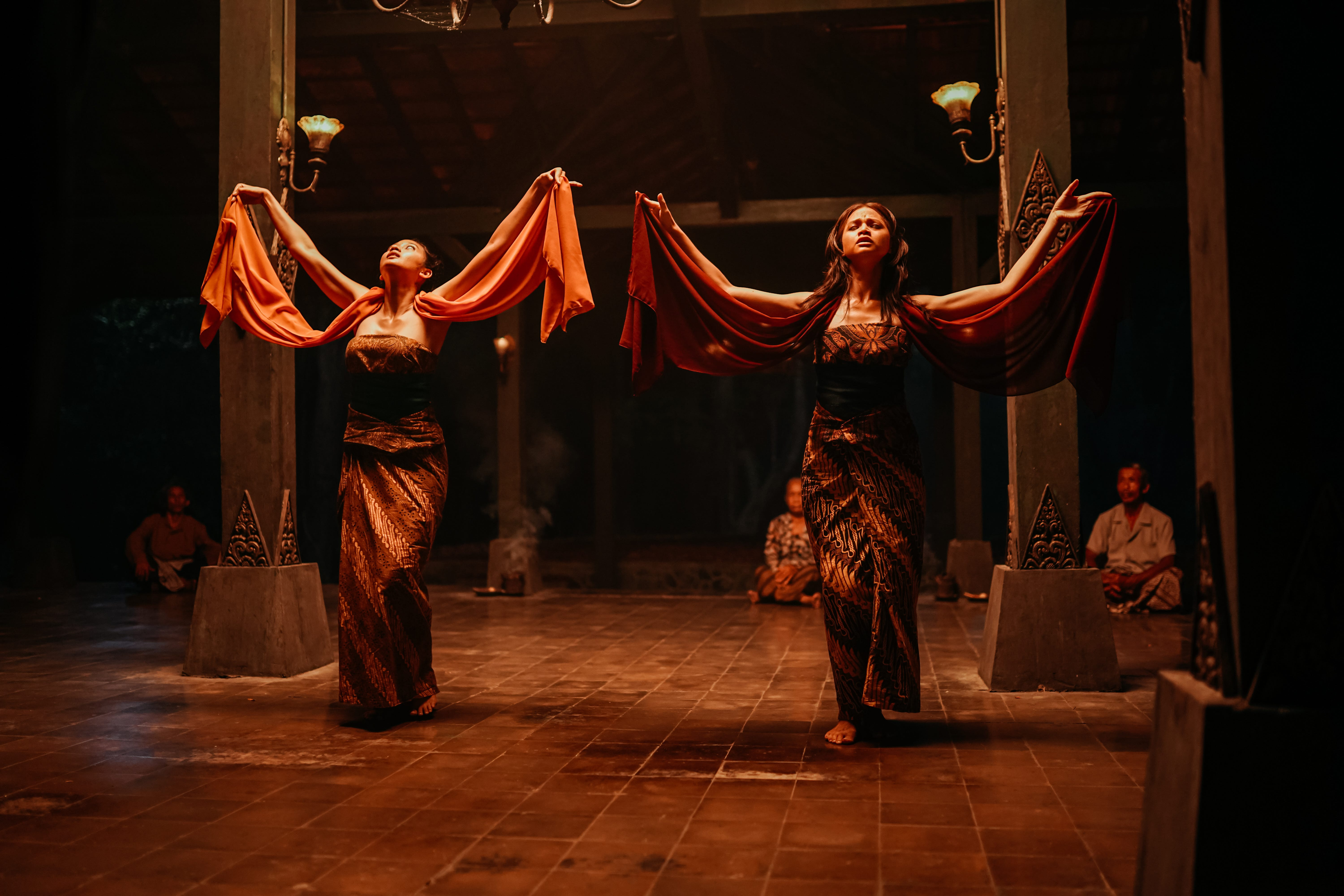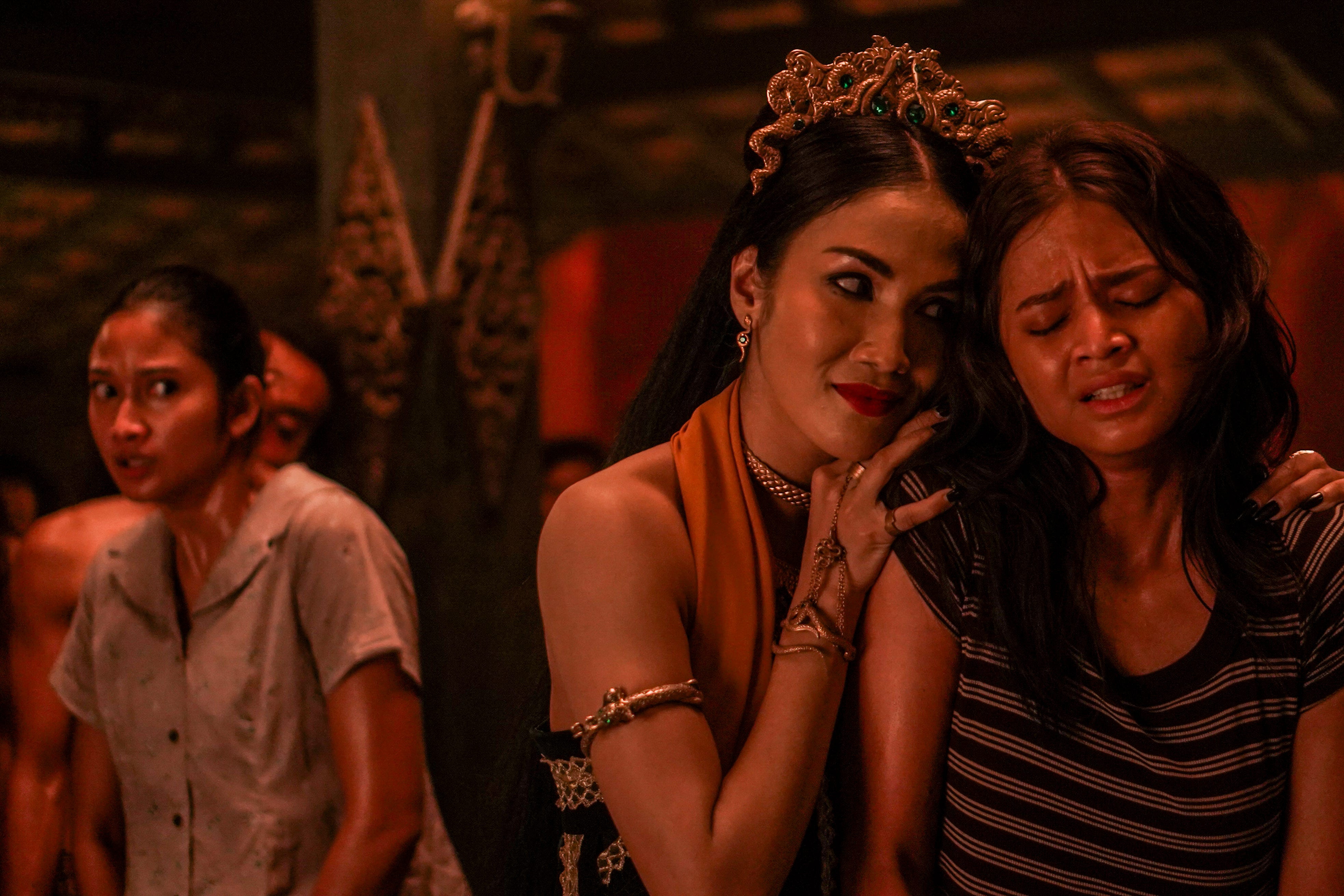Delve into the terrifying origins of a village ensnared by malevolent forces in “Dancing Village: The Curse Begins” (original title: Sewu Dino), a chilling Indonesian horror film that serves as a prequel to “KKN di Desa Penari”. While navigating a complex mythology, director Kimo Stamboel masterfully crafts an atmosphere of dread, primarily through stunning visuals and a captivating performance by Aulia Sarah as the demonic entity, Badarawuhi. The film opens in 1955, establishing a grim ritual where young women of a village attempt to appease an evil spirit demanding a dancer as sacrifice. However, this ritual is a clever ruse to seize a powerful bangle from the demon, intended to liberate the village from its sinister grip. The precious trinket falls into the hands of a young woman who flees into the ominous forest, pursued by the enraged demon Badarawuhi, who relentlessly demands the bangle’s return.
The narrative then jumps to 1980, where we meet Mila (Maudy Effrosina), the daughter of the woman who escaped with the bangle decades prior. Mila, accompanied by her cousin Yuda (Jourdy Pranata) and friend Arya (Ardit Erwandha), returns to the eponymous Dancing Village. Her mother is now in a mysterious, coma-like state, seemingly possessed. Guided by the counsel of a local shaman, Mila journeys back to the village, believing that returning the bangle is the key to breaking the curse and rescuing her mother. However, their well-intentioned plan quickly spirals into a terrifying ordeal far beyond their expectations.
Stamboel’s direction in “Dancing Village: The Curse Begins” is marked by a non-linear timeline, effectively building suspense and unveiling crucial backstory elements piece by piece. The fragmented narrative, while occasionally disorienting in sequences like the flashback to the bangle theft, largely succeeds in deepening the mystery surrounding Mila’s mission and the village’s desperate measures to initially rid themselves of the demonic entity. The director’s strength lies in his masterful command of cinematic techniques to cultivate an increasingly oppressive atmosphere of supernatural horror. He skillfully employs practical effects, such as billowing smoke from roasting corn to create a sense of foreboding, and jarring strobe lights to amplify nightmarish hallucinations. As the film progresses, Stamboel unleashes a powerful arsenal of visual tricks, including subtle yet unsettling color palette shifts, eerie on-screen transformations, and a particularly striking camera technique that plunges into and out of a character’s perspective, dramatically altering their surroundings to reflect the encroaching supernatural realm.
However, the most potent instrument in Stamboel’s horror toolkit is undoubtedly Aulia Sarah. Her performance as Badarawuhi is nothing short of mesmerizing. Sarah embodies the demon with a sinuous grace and seductive menace, crafting an unforgettable portrayal of sensuous evil. Whether she’s invading the personal space of her victims with chilling intimacy or dragging Mila into a terrifying netherworld where tormented souls are eternally compelled to dance for her amusement, Sarah’s Badarawuhi is a force of malevolence that chills to the core while simultaneously captivating the viewer, leaving them yearning for more of her terrifying presence.
Despite its visual and performance strengths, “Dancing Village: The Curse Begins” could have benefited from a deeper exploration of the village’s culture and its connection to the curse. While the film briefly mentions the village’s namesake, alluding to a tradition of dance talent, and presents scenes of women practicing traditional dances, it unfortunately stops short of weaving these cultural elements into the supernatural narrative. This lack of deeper context is a missed opportunity, as enriching the film with the village’s cultural heritage could have provided a more compelling and resonant backdrop for the escalating horror, adding layers of meaning to the terrifying events unfolding.
As a prequel to “KKN DE DESA PENARI,” where Aulia Sarah first debuted as Badarawuhi, “Dancing Village: The Curse Begins” stands alone as a potent horror experience. Prior knowledge of “KKN” is not essential, as this prequel effectively establishes its own narrative and terrifying mythology. While “Dancing Village: The Curse Begins” may leave some viewers seeking a more comprehensive understanding of its intricate mythology, it compensates with a meticulously crafted atmosphere of escalating dread and breathtaking visual storytelling. This Indonesian ghost story, imbued with a distinct cultural flavor, offers a chilling and worthwhile cinematic journey into the heart of supernatural darkness.




